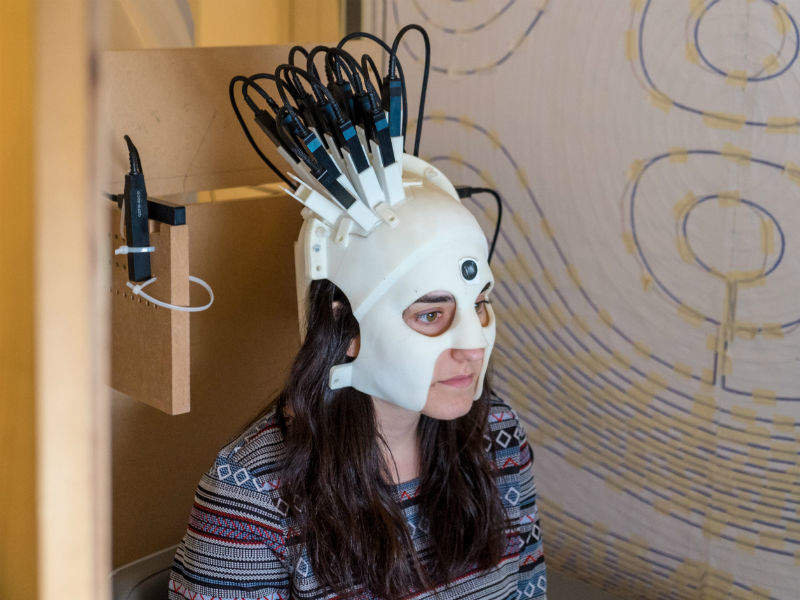
A new generation of brain scanner can be worn like a helmet, allowing patients to move naturally while being scanned.
The device was created as part of a five-year Wellcome Trust funded project which aims to revolutionise human brain imaging. It was developed by researchers at the Sir Peter Mansfield Imaging Centre, the University of Nottingham and the Wellcome Trust Centre for Human Neuroimaging, UCL.
The researchers have demonstrated that the scanner can measure brain activity while people make natural movements, including nodding, stretching, drinking tea and even playing ping pong.
As well as being wearable, the magnetoencephalography (MEG) system is lightweight and more sensitive than other available brain scanner systems.
The researchers hope this new scanner will improve research and treatment for patients who can’t use traditional fixed MEG scanners, such as young children with epilepsy and patients with neurodegenerative disorders like Parkinson’s disease.
Dr Matt Brookes who leads the MEG work in Nottingham, where the prototype was built, said: “This new technology raises exciting new opportunities for a new generation of functional brain imaging.
“Being able to scan individuals while they move around offers new possibilities, for example, to measure brain function during real-world tasks, or genuine social interactions. This has significant potential for impact on our understanding of not only healthy brain function but also on a range of neurological, neurodegenerative and mental health conditions.”
Brain cells operate and communicate by producing electrical currents. These currents generate tiny magnetic fields that are detected outside the head and researchers can use MEG to map brain function by measuring these magnetic fields. This allows for a millisecond-by-millisecond picture of which parts of the brain are engaged when patients undertake different tasks, such as speaking or moving.
Current MEG scanners are large and weigh around half a tonne. This is because the sensors used to measure the brain’s magnetic field need to be kept at -269°C, which requires a large amount of cooling technology. The also require patients to be very still while being scanned as even a movement of 5mm can make the images unusable.
The researchers solved these problems for their brain scanning helmet by scaling down the technology and taking advantage of new ‘quantum’ sensors that could be mounted in a 3D-printed prototype helmet. As the new sensors are very light and can work at room temperature they can be placed directly onto the scalp surface. Positioning the sensors much closer to the brain increases the amount of signal that they can pick up.
The lightweight nature of the new scanner also means that, for the first time, subjects can move their heads during the scanning. However, the quantum sensors will only operate in this way when the Earth’s magnetic field has been reduced by a factor of around 50,000. To solve this problem, the research team developed special electromagnetic coils, which helped to reduce the Earth’s field around the scanner. These coils were designed specifically to sit either side of the subject, and close to the walls of the room, to ensure that the scanner environment is not claustrophobic.
The scanner is based on helmets that can be made to fit anyone who needs to be scanned. Following the success of their prototype system, the researchers are now working towards new helmet styles, which will have the appearance of a bicycle helmet and will be suitable for all ages and head sizes.



